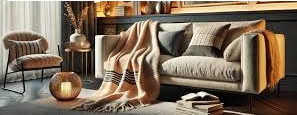Latest mattress trends in 2025 include smart beds with AI, temperature regulation, sleep pattern tracking, and sustainable, eco-friendly designs. Read expert reviews and pro tips on the future of mattresses.
Introduction
By 2025, mattresses will no longer be mere surfaces on which to sleep. They will be smart sleep systems integrating comfort and health with state-of-the-art technology. The new AI-powered, eco-friendly, and highly customizable mattresses will not only improve sleep but also enhance users’ lifestyles and wellness.
This review guides the user on the critical trends in the mattress industry for 2025, detailing the technology and smart features, sustainability, and innovative designs. We include Guider Review and Pro Tips to facilitate selecting the most suitable mattress for each user.
Why Mattress Technology Matters in 2025
Sleep is vital to mental and cognitive functions, body recovery, and overall wellness. Modern mattresses feature:
- Improved Health Monitoring – Heart rate, breathing, and sleep cycles are tracked.
- Total Comfort Customization – Firmness is adjustable based on individual preference.
- Advanced Smart Climate Control – The bed can be cooled in summer and warmed in winter.
- Eco-Friendly Materials – Minimize carbon footprint by opting for sustainable textiles.
- Longevity – Technology-driven extension of mattress lifespan.
Top Mattress Trends in 2025
1. Smart AI-Powered Mattresses
- AI sensors that track sleep cycles, breathing, and heart rate become commonplace.
- They alter mattress firmness as needed during the course of the night.
- Offer sleep tracking, which syncs with mobile devices.
Example: The Sleep Number 360 Smart Bed AI tracks sleep patterns and adjusts firmness accordingly.
Pro Tip: Devices that work with smart home platforms, such as Alexa and Google Home, will help you sleep smarter.
2. Temperature-Regulating Technology
- Latest mattresses help you avoid the discomfort of waking up sweaty by utilizing:
- PCM or abolishing/releasing heat and cooling gel foams
- Dual-zone temp control for couples
Example: Eight Sleep Pod 3 uses water climate control technology with cooling or heating.
Pro Tip: If you share a bed, dual temp control robes will help you more.
3. Adjustable Firmness & Positioning
- Hybrid mattresses now include air chambers or modular foam layers.
- Some allow individual firmness zones (head, back, legs).
- Integration with adjustable bases for zero-gravity sleep.
Example: Saatva Solaire lets users adjust firmness across 50 settings.
Pro Tip: Ideal for couples with different comfort needs.
4. Sustainable & Eco-Friendly Mattresses
2025 has seen a shift toward green materials:
- Organic cotton, wool, and natural latex.
- Recycled steel for coils.
- Plant-based memory foams.
Example: Avocado Green Mattress uses 100% organic certified materials.
Pro Tip: Look for certifications like GOLS, GOTS, OEKO-TEX, and CertiPUR-US.
5. Pressure Relief & Pain Management
- Mattresses now target spinal alignment and chronic pain relief.
- Zoned support layers relieve pressure on shoulders, hips, and back.
- Some use infrared technology covers to promote blood circulation.
Example: Bear Elite Hybrid mattress uses Celliant fabric to aid muscle recovery.
Pro Tip: Pick a medium-firm mattress with zoned lumbar support if you suffer from back pain.
6. Smart Sleep Tracking Integration
- Embedded sensors track
- Sleep duration
- REM cycles
- Tossing & turning
- Sync with health apps like Fitbit, Apple Health, and Google Fit.
Pro Tip: Your sleep data should stay secure by choosing models with data privacy guarantees.
7. Noise & Motion Isolation Improvements
- Couples benefit from motion isolation foams.
- Hybrid tech reduces partner disturbance.
- Silent air chambers replace noisy mechanical systems.
Pro Tip: If you’re a light sleeper, choose memory foam or hybrid mattresses with motion-reducing layers.
8. Reversible & Modular Mattress Designs
- Some 2025 models allow reversible firmness sides (soft on one side, firm on the other).
- Modular mattresses let you replace worn-out layers without buying a new one.
Pro Tip: Modular designs are cost-effective long-term investments.
9. Anti-Allergy & Hygiene Features
- Hypoallergenic covers for sensitive sleepers.
- Antibacterial and dust-mite-resistant fabrics.
- Washable bright covers with UV sterilization.
Pro Tip: Great for children, people living with asthma, and allergy-prone adults.
10. Luxury & Lifestyle Mattresses
- Built-in massage functions.
- Bright lighting that simulates sunrise/wake-up cycles.
- Wireless charging pads for devices.
Pro Tip: Best for lifestyle buyers who want comfort plus luxury tech.
Pros and Cons of Smart Mattresses in 2025
| Pros | Cons |
| Personalized sleep experience | Higher costs compared to traditional mattresses |
| Temperature control for year-round comfort | Tech features may require maintenance |
| AI health monitoring & reports | Risk of over-reliance on data |
| Eco-friendly options available | Some models are heavy and hard to move |
| Motion isolation for couples | Subscription apps may add extra costs |
Guider Pro Tips for Choosing a Smart Mattress in 2025
- Set a Budget – Smart mattresses start around $1,000 and can exceed $5,000.
- Check Compatibility – Ensure it works with your smart home system.
- Think Long-Term – Choose models with modular or replaceable parts.
- Test Before Buying – Always take advantage of free trials.
- Prioritize Health Features – Focus on what improves your personal sleep quality, not just fancy add-ons.
FAQs – Mattress Trends in 2025
Q1. Are smart mattresses worth the investment?
Yes, if you value personalized comfort, temperature regulation, and health tracking.
Q2. Do smart mattresses need Wi-Fi?
Most do for full functionality, but many also work offline for basic features.
Q3. How long do smart mattresses last?
Typically 8–12 years, similar to traditional models, with proper care.
Q4. Are eco-friendly mattresses as durable?
Yes, natural latex and organic materials are often more durable than synthetic foams.
Q5. Can smart mattresses help with snoring?
Some models with adjustable bases and anti-snore positions can reduce snoring.
Conclusion
The latest mattress trends in 2025 reveal a future where beds are no longer passive furniture but active wellness tools. From AI-powered firmness adjustments and climate control to eco-friendly sustainability and luxury add-ons, modern mattresses are transforming sleep into a science-backed, customizable experience.
By following these Guider Review insights and Pro Tips, you can confidently choose a mattress that matches your comfort, lifestyle, and long-term health goals.
✨ Final Thought: In 2025, your mattress isn’t just where you sleep, it’s where technology, comfort, and wellness meet.


